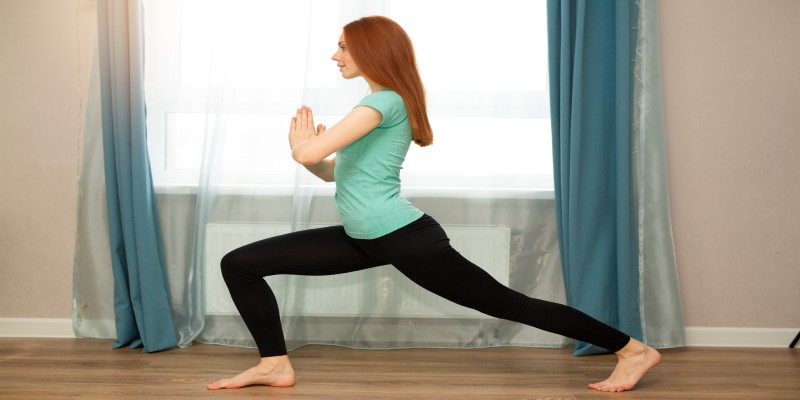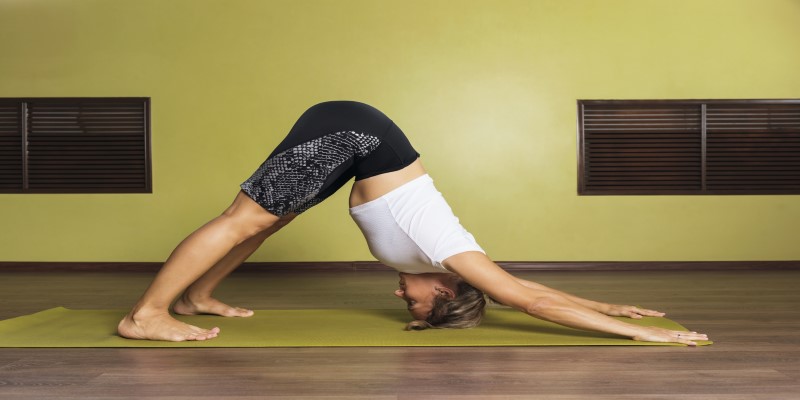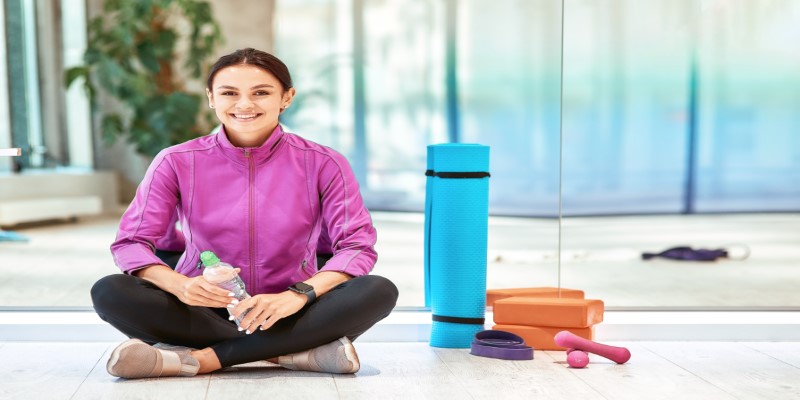
Welcome to the world of yoga, a holistic practice that not only nurtures your body but also calms your mind. If you're a beginner eager to explore the realms of yoga, we've got just the right thing for you – a 15-minute yoga flow that focuses on grounding techniques. In this article, we'll guide you through each step, making your initiation into yoga a breeze. Plus, we'll sprinkle in some easy workouts to enhance your overall well-being.
What is a Yoga?
Yoga, derived from the Sanskrit word "yuj," meaning to yoke or unite, is an ancient practice that encompasses physical postures, breath control, meditation, and ethical principles. It is a holistic approach to well-being that harmonizes the mind, body, and spirit. The beauty of yoga lies in its accessibility to people of all ages and fitness levels, offering a path to physical and mental balance.
Steps and Poses Involved in Yoga:
If you're a novice seeking a gentle initiation, we present the perfect 15-minute yoga flow designed with beginners in mind. So, let's embark together on a transformative journey toward inner peace and well-being.
Setting the Stage:
Begin your yoga journey by finding a quiet and comfortable space. Roll out your yoga mat, ensuring a surface that supports your movements. Wearing loose, comfortable clothing allows for unrestricted mobility – a key factor for beginners.
Mindful Breathing (2 minutes):
Start via way of means of sitting cross-legged, arms resting in your knees. Close your eyes and awareness in your breath. Inhale deeply, feeling your lungs expand, and exhale slowly, freeing tension. This easy respiratory workout facilitates shift your awareness inward, growing a basis for the practice.
Gentle Warm-up (3 minutes):
Transition into gentle warm-up poses to prepare your body for the flow. Begin with neck rotations, shoulder rolls, and side stretches. Gradually move to cat-cow stretches, engaging your spine and promoting flexibility.
Mountain Pose to Ground Yourself (2 minutes):
Stand tall, feet hip-width apart, and arms by your sides. Inhale, reaching your arms overhead, palms facing each other. Feel the connection between your feet and the ground, grounding yourself like a mountain. Hold for a breath, fostering stability and presence.
Forward Fold for Flexibility (2 minutes):
From Mountain Pose, exhale and hinge at your hips, bringing your torso towards your thighs. Allow your hands to reach the floor or grasp your elbows. Feel the stretch in your hamstrings and spine, promoting flexibility while remaining grounded.

Warrior Poses for Strength (3 minutes):
Transition into Warrior I and Warrior II poses. These poses not only build strength in your legs and core but also encourage a sense of empowerment. Focus on maintaining your connection with the ground, feeling rooted and strong.
Tree Pose for Balance (2 minutes):
Shift your weight onto one leg and produce the only of the alternative foot to the internal thigh or calf, heading off the knee. Find a focus for stability as you increase your hands overhead. Tree Pose complements stability and awareness even as connecting you to the earth.
Seated Poses for Reflection (2 minutes):
Wind down with seated poses like Easy Pose and Seated Forward Bend. These poses promote introspection, allowing you to connect with your inner self. Feel the grounding energy beneath you as you embrace a moment of stillness.
Savasana for Relaxation (1 minute):
Lie down to your back, legs prolonged and palms through your sides. Close your eyes and awareness to your breath. Savasana, or Corpse Pose, concludes the flow, presenting rest and a deeper connection to the ground.
Jumping Jacks (1 minute):
Boost your heart rate and warm up your body further with a minute of jumping jacks. This quick cardiovascular exercise complements the gentle yoga flow, promoting overall fitness.
Bodyweight Squats (1 minute):
Engage your lower body muscles with bodyweight squats. Keep your feet shoulder-width apart and squat down as if sitting back in a chair. This exercise enhances strength and complements the grounding aspect of the yoga flow.
Plank (1 minute):
Finish your routine with a plank to strengthen your core muscles. Hold a straight-arm plank position, ensuring a straight line from head to heels. This workout complements the balance-focused yoga poses.
Benefits of Yoga:
Here are some benefits of doing yoga:
Physical Health:
Yoga is renowned for its ability to enhance flexibility, strength, and balance. The various poses, or asanas, stretch and strengthen muscles, promoting overall mobility. Regular practice can also improve posture and alleviate chronic pain conditions, fostering a healthier, more resilient body.
Mental Well-being:
One of the standout benefits of yoga is its positive impact on mental health. The combination of mindful breathing and meditation cultivates a calm, focused mind. Practicing yoga has been linked to reduced stress, anxiety, and depression, providing a natural avenue for mental relaxation and rejuvenation.
Stress Reduction:
Yoga promotes the engagement of the parasympathetic nervous system, often referred to as the "rest and digest" system. This counteracts the outcomes of the strain-inducing sympathetic worried system, mainly due to decreased degrees of strain hormones and an average feeling of tranquility.

Conclusion:
In the rich tapestry of well-being, yoga is a thread seamlessly weaving together physical vitality, mental serenity, and emotional equilibrium. Beyond its physical postures, yoga is a holistic journey, empowering individuals to unite mind, body, and spirit. Its benefits are profound and far-reaching, from enhancing flexibility to fostering deep self-awareness.
Each breath, pose, and moment on the mat contributes to a more harmonious and balanced life. Embracing the wisdom of yoga invites a transformative practice where the positive influence of this ancient art illuminates the path to holistic well-being, guiding individuals toward a state of unity and flourishing vitality. Hope you found this article worth reading.



